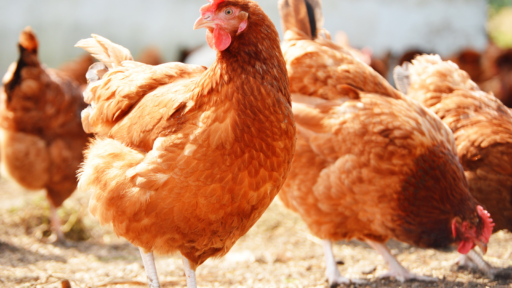As high path avian influenza (HPAI) spreads rapidly across the U.S., the on-farm financial ramification of an infection in a commercial poultry flock can be catastrophic. This article is a follow-up to the recent Southern Ag Today article posted on March 29th, 2022, titled “The Cost of Avian Influenza to the Southeastern Broiler Industry.” That article highlights that as of March 21st, 2022, there were 11,901,888 commercial birds destroyed due to HPAI. Fifteen days later, that number has nearly doubled (22,851,072 as of April 5th, 2022). While the continued outbreaks of HPAI have been mainly in commercial turkey and layer flocks, commercial broiler flocks are not immune to outbreaks.
Understanding the financial implications of contracting HPAI in a commercial broiler flock is critical and will hopefully highlight the importance of strict adherence to biosecurity measures. While the federal government provides financial aid to a grower for depopulation, cleaning and disinfecting, indemnity payments are only for the birds infected with HPAI. It is important to note that the contract grower is not guaranteed 100% of the indemnity payment, as a portion can be distributed to the owner/integrator. There is also no financial assistance provided for future loss of production while the contaminated area is cleared of the virus. This timeframe could last more than 120 days and has lasting financial implications. For example, the HPAI outbreak in a 12-house broiler operation in Kentucky in early February 2022 is not expected to receive new placements until August 2022. A +120-day loss of operation could mean the producer loses income associated with 2-3 broiler flocks but still has the expenses of maintaining the facilities and making any payments on debts related to the operation. With the lack of financial support from the federal government for future losses and no private insurance options, the farm-level financial impact of contracting HPAI is significant.
We examined the financial impact of contracting HPAI in a standard four broiler house (43 ft. x 600 ft.) operation in Kentucky with 32,300 broilers per house, a 56-day grow-out period, and 17 days to clean between flocks. The loss in net farm income from contracting HPAI was $46,512, $97,658, and $158,348 for the loss of one, two, and three flocks, respectively. This loss in net farm income could also be interpreted as the on-farm equity required to self-insure the operation from HPAI. Therefore, early adoption of biosecurity measures is imperative as a financial risk mitigation method for a disease outbreak like HPAI. Producers should also consider how they would manage this type of risk, should they be forced to deal with it.
References:
Brothers, Dennis. “The Cost of Avian Influenza to the Southeastern Broiler Industry”. Southern Ag Today. March 29, 2022. Available online: https://southernagtoday.uada.edu/the-cost-of-avian-influenza-to-the-southeastern-broiler-industry/
USDA-APHIS. “The HPAI Indemnity and Compensation Process”. Available online: https://www.aphis.usda.gov/publications/animal_health/2016/hpai-indemnity.pdf
Shockley, J.M., T. Mark, K. Burdine, and L. Russell. “Financial Implications from Contracting Avian Influenza in a U.S. Broiler Operation”. Journal of Applied Farm Economics 3, no. 1 (Spring 2020). Available Online: https://docs.lib.purdue.edu/cgi/viewcontent.cgi?article=1034&context=jafe
Shockley, Jordan. “On-Farm Cost of Contracting High Path Avian Influenza in a Commercial Broiler Flock“. Southern Ag Today 2(16.3). April 13, 2022. Permalink





